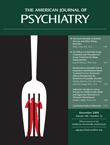In a series of letters, Balram Halwai attempts to prepare the Chinese Premier, Wen Jiabao, for his upcoming trip to Bangalore. The purpose of the letters is to ensure that Jiabao is not given a false view of India. Balram believes that the story of his life provides a much better description of the country than Jiabao is likely to receive from its leaders. The story describes his emergence from the dark, impoverished interior of India that runs along the Ganges to his current life as an entrepreneur who lives in the light of Bangalore.
His life story begins at his first day in school when he finds that he is lacking both a name and a date of birth. His mother was too ill with tuberculosis and his father was too busy in his work as a rickshaw puller to have his birth recorded. His early life is spent in the “India of Darkness.” He is forced to leave school at an early age to work in a tea shop. This India has no clean water or electricity and is populated by children who are thin and hungry. The doctors who are employed to work in the government hospital are never there since they need to work at a private hospital to pay for their bribes; the teacher takes the lunch money provided by the government for the students because he has not been paid. The political leader, the Great Socialist, has lost interest in fighting the corruption that he claimed he would stop.
In his first novel, Adiga uses Balram’s biting humor and cynicism to describe the reality of democracy in India. Balram is given an identity by a government official so the party can use his vote at every election. When another man in the slums believes the posters that describe the wonders of democracy and his right to stand up against corruption, others try to explain to him that this is a sham. He ignores those who plead with him not to attempt to record his own vote. There are terrible consequences when he fails to understand that results of elections are predetermined.
Balram is able to see glimpses of the “India of Light” when he becomes a driver for a wealthy family. Eventually he comes to Delhi, where the worlds of light and darkness meet. The masters live in luxurious high-rise buildings, supported by drivers and other servants who live in a squalid underground. It is a world where a relatively small group of wealthy and corrupt masters is able to control a vast population of well-controlled poor. Balram realizes that in modern India there is no moral path connecting these two worlds. He breaks out of the darkness by murdering his boss and stealing a large sum. He then uses his money to become an entrepreneur.
Adiga—previously a correspondent with Time who has written extensively about the emergence of India as an economic power—uses this novel to show the paradox of modern India. From the vantage point of a visitor to its great cities, it is a world of the present and the future bringing new opportunities to its population. The truth of India is far more complex. This surface covers over a parallel truth of vast suffering and hopelessness. The great Indian democracy—according to Adiga—is an illusion, which can fool outsiders from China or the West. People living within the dark interior of India understand that the rapid economic development of the country has no effect on their lives or even the lives of their children. Moreover, a complex system of castes in which individuals understood their roles has deteriorated into a system with just two castes: a caste with fat bellies and one with thin bellies.
On another level, Balram’s external success also covers something very dark and shameful. The acts that led to his current success also led to the death of his boss and probably to the deaths of family members. Although he never expresses contrition for these acts, his letters convey an awareness that there is also a dark core that underlies his own life. Adiga is also telling the reader that the poverty and humiliation that India’s poor suffer do not necessarily make them nobler. Rather, they bring an anger and contempt that seethes within the country.
Adiga is able to tell the story of Balram and India with remarkable humor and humanity. At times, it is extraordinarily comic, particularly when it describes the silliness of the masters or the corruption in India’s politics. Balram brings a commanding voice to the narration. His descriptions convey an understanding of the people that surround him and the corruption that pervades India. However, his masters hear a different voice; they hear the voice of a loyal servant who has the same feelings for his masters as he has for his parents. The small number of individuals who appear to be in control of modern India are unaware of the anger and contempt that surround them.
The reader is brought to fascinating parts of India that he or she may never have imagined. These include a community of drivers and other servants who have a quiet contempt for the people they are driving or serving; the rickshaw pullers and farm workers who are so focused on survival that they lack the time to name their children; and the multitudes who crowd the streets of Delhi where they sleep by street lights. The importance of the novel is its compelling depiction of the forces that are in conflict in India and elsewhere that are likely to shape our future as well as India’s.

